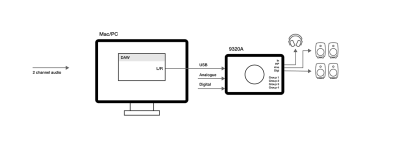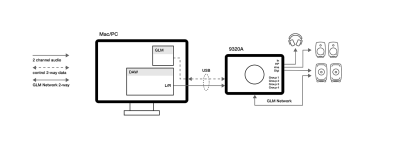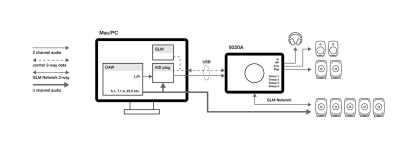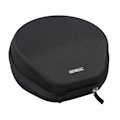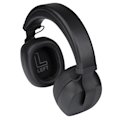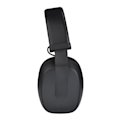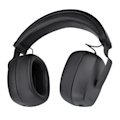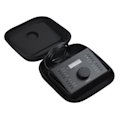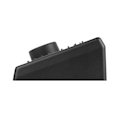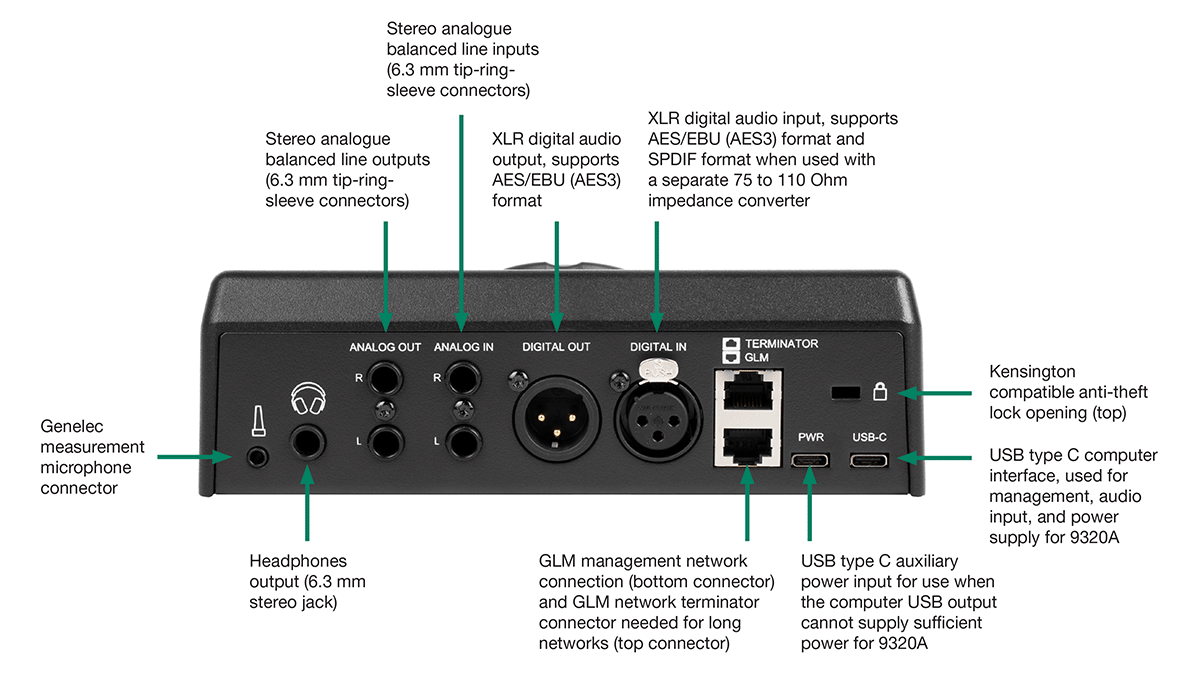9320A SAM™ Reference Controller
Five audio tools in one – for a boosted workflow
As a professional monitor controller, calibration set, output interface, GLM remote and headphone amplifier, the 9320A integrates tightly with our UNIO Ecosystem to offer audio engineers seamless bridging of in-room and personal headphone monitoring – from stereo to immersive.
And now, with UNIO Personal Reference Monitoring (PRM), the 9320A can be combined with 8550A Professional Reference Headphones for total accuracy.
9320A SAM™ Reference Controller
Five audio tools in one – for a boosted workflow
As a professional monitor controller, calibration set, output interface, GLM remote and headphone amplifier, the 9320A integrates tightly with our UNIO Ecosystem to offer audio engineers seamless bridging of in-room and personal headphone monitoring – from stereo to immersive.
And now, with UNIO Personal Reference Monitoring (PRM), the 9320A can be combined with 8550A Professional Reference Headphones for total accuracy.
Working with any DAW and audio interface system, the 9320A puts flexible connectivity, a reference-grade headphone output and physical control of our Smart Active Monitoring (SAM), Genelec Loudspeaker Manager (GLM) and Aural ID Technology at your fingertips, so you can confidently access your studio reference anywhere, anytime – and rapidly create mixes that translate with maximal consistency.



Explore how the 9320A boosts audio workflows
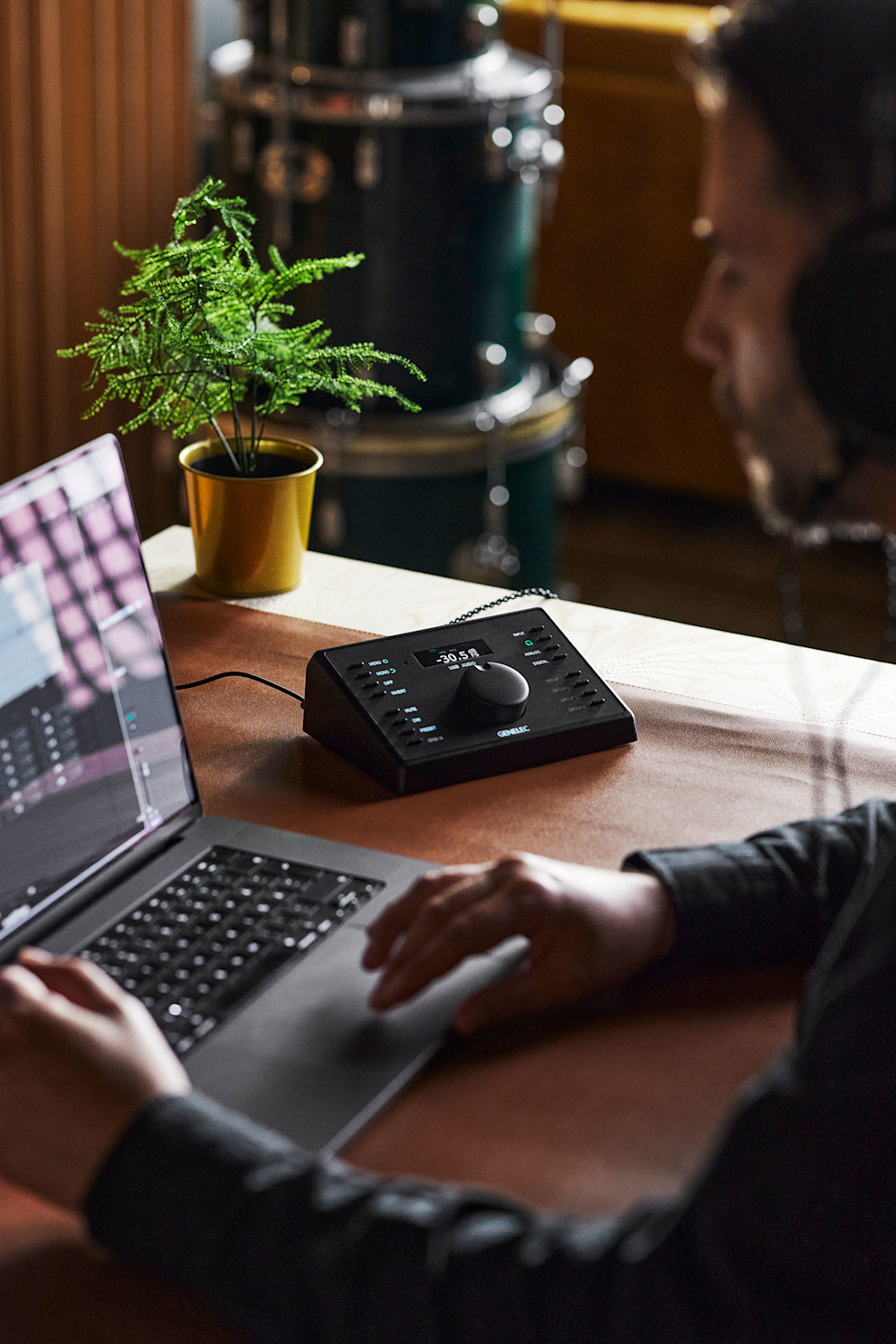
1. Every monitoring option at your fingertips
Quick control of SAM, GLM and Aural ID
The 9320A provides intuitive and quick-to-access physical control of our SAM, GLM and Aural ID Technology – with clear haptic feedback – for a faster workflow and less need to keep software windows open. With control of GLM right at your fingertips, it’s easy to switch between and manage all your SAM Monitoring layouts, from stereo to immersive.
Easy alignment of additional in-room monitoring
Level alignment and control of any additional stereo monitoring systems connected directly to the high-quality outputs of the 9320A is simple. This enables you to move rapidly between in-room monitoring options and trust each one for reference listening.
Seamless bridging to headphones
With the 9320A, headphone monitoring can also be quickly and precisely level aligned and controlled – giving you smooth and easy button switching between all your loudspeaker and headphone-based monitoring, with no need to readjust level each time.

2. Professional headphone monitoring
Reference-grade headphone output
The 9320A aids reference listening by providing the tools needed to calibrate your personal headphone sound character. The headphone output supports impedances from 16 to 600 ohms with incredible linearity (THD+N less than -110 dB) and dynamic range (126 dB), and a maximum RMS output of 6 volts – to offer the best possible performance from any high-quality professional headphones.
UNIO Personal Reference Monitoring
Our UNIO PRM solution combines the 9320A with a specific factory-calibrated pair of 8550A Professional Reference Headphones, for total accuracy. This uniquely matched system represents a pioneering new active monitoring headphone solution with exceptional sonic reliability, taking seamless bridging of in-room and personal headphone monitoring to a whole new level.
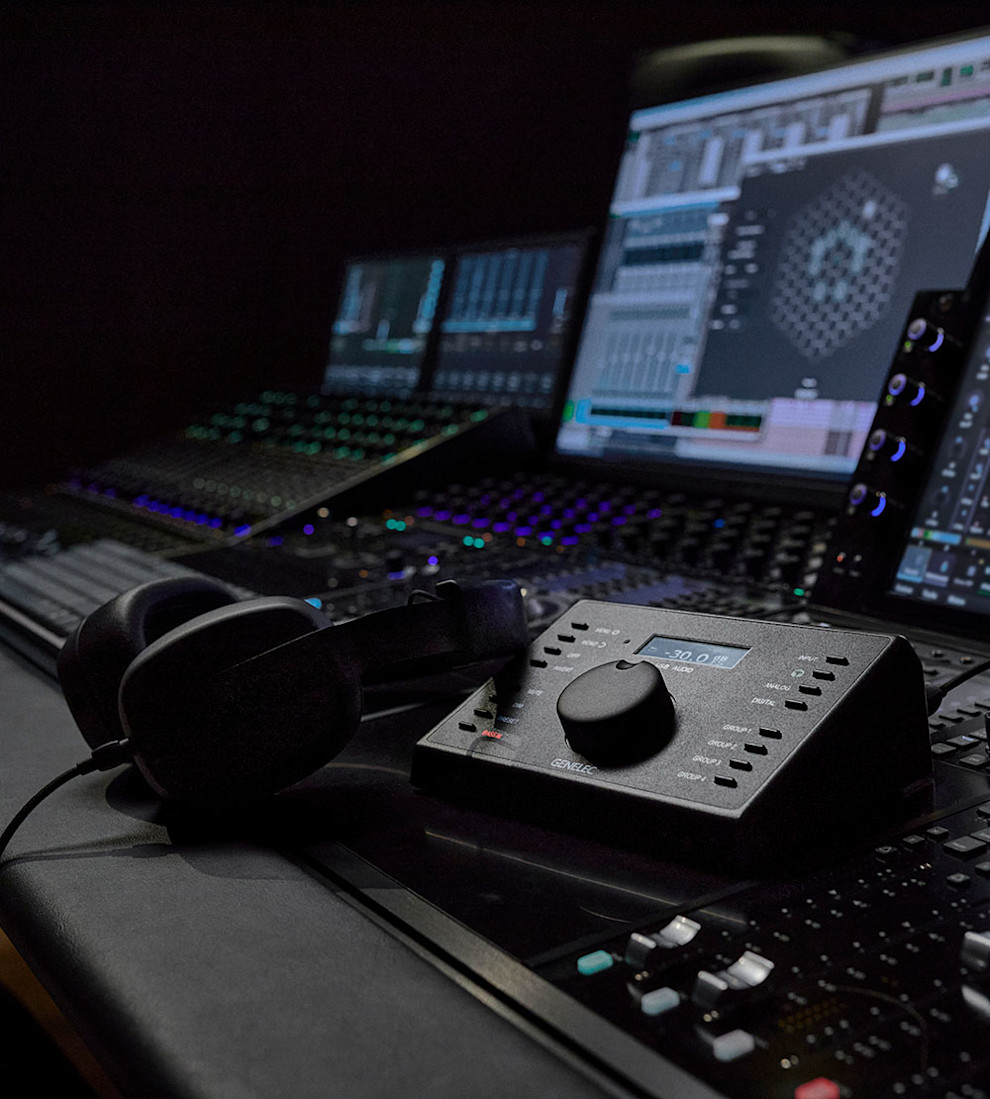
3. Software calibration and greater freedom
Automatic GLM AutoCal 2 calibration
Working with the GLM software and SAM system elements of our UNIO Ecosystem, the 9320A provides neutral, carefully aligned audio reproduction over loudspeaker monitors – with correctly calibrated and equalised subwoofer support when needed. Additionally, GLM provides access to detailed GRADE™ Room Acoustic Reports. For this, a factory-calibrated Reference Microphone is included with the 9320A.
Take your reference beyond the studio
The alignment tools offered by the 9320A enable the smoothest possible transitioning when cross referencing between loudspeaker monitoring and headphones. This gives you the benefit of being able to access a tight match to your studio reference via compact stereo monitoring systems and headphones – for the freedom to work outside your trusted base without compromising your effectiveness.
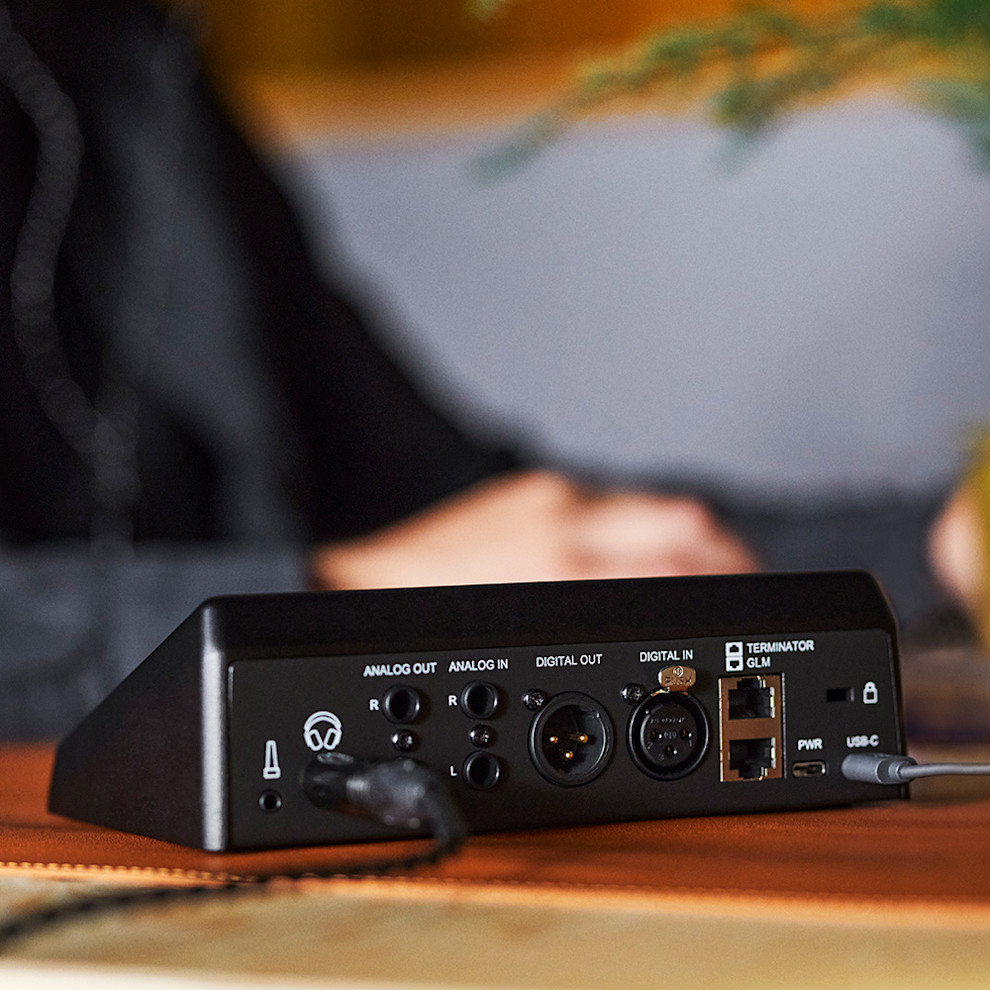
4. AES/EBU connectivity for the purest signal
Versatile monitoring options
Stereo and stereo-with-subwoofer monitoring systems connect easily to the 9320A using its analogue and AES/EBU input/output connectivity. The device also works as a USB output interface for high resolution stereo audio from a computer. The balanced analogue outputs and AES output of the 9320A support both fixed line level and adjusted line signals, making it compatible with any professional loudspeaker monitor or headphone set.
High-quality DAC conversion
Use our hugely versatile 9320A as a high-quality converter from analogue to AES and AES to analogue – as well as converting USB computer audio to any output – creating an extremely effective hub for your professional monitoring tasks. The maximum level of the analogue balanced line input can be set to +12 dBu or +24 dBu, while USB and AES digital audio is routed to the AES output with an A-weighted dynamic range of 138 dB.
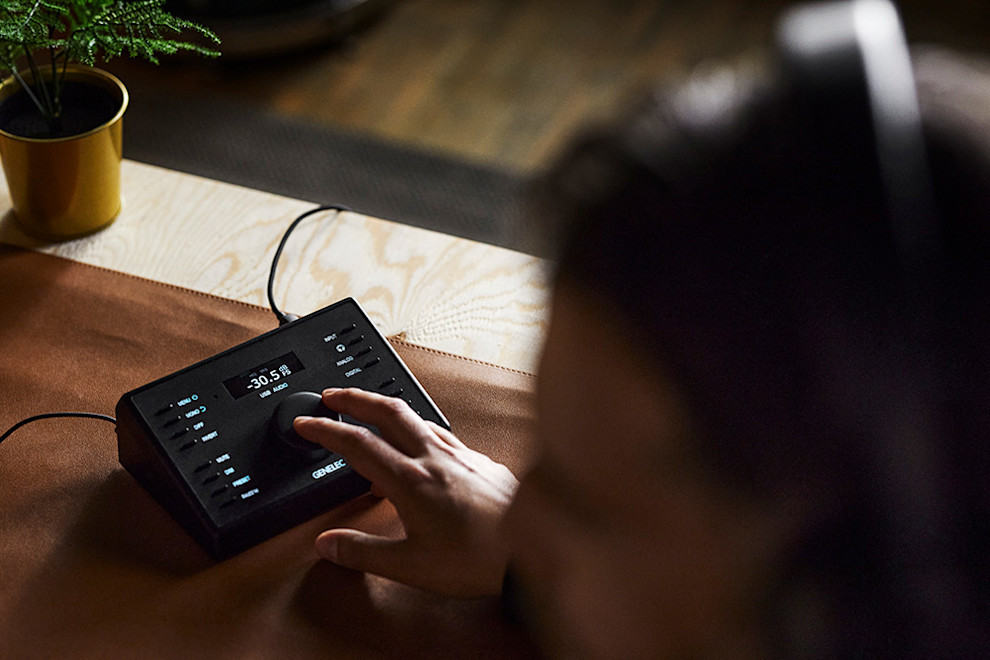
5. Safe listening via noise dose estimation
Hearing health support during monitoring
Protect your ears with the help of continuous A, C and Z weighted SPL monitoring shown on the backlit display of the 9320A, which allows quick assessment of listening safety.
SPL is sampled using the included Reference Microphone for in-room audio – and calculated using headphone sensitivity data for headphone audio. The audio engineer's sound exposure dose is logged, and dose alarms can be set with ease. Combined with the ability to create highly linear monitoring systems – which naturally support minimal hearing fatigue – these listening safety features make the 9320A a key ally for hearing preservation.
How is the 9320A used?
For professional monitoring across fixed and mobile setups
The 9320A is the ideal audio monitoring multi-tool for engineers in stereo and immersive music studios, game audio studios, broadcasting, streaming and AV post-production.
Although at its best when used as part of our PRM solution alongside SAM Monitors and a computer running GLM and Aural ID software, the 9320A can also be used in independent mode without a computer – and provides support for all professional loudspeaker monitors and headphones.
Powered over its type-C USB data connection, the 9320A is compatible with any computer DAW. If power is not available from the computer, a separate USB type-C power input is available to use with a separate power source.
The audio bandwidth for all input/output combinations extends up to 46 kHz and offers a dynamic range exceeding 120 dB, THD+N lower than -110 dB and minimal input to output latency in the range 2 to 3.2 ms.
Aural ID adds binaural virtual monitoring
Our uniquely tailor-made and accurate Aural ID Technology utilises your highly detailed personal HRTF to render virtual monitors over professional headphones – offering true-to-life access to the experience of in-room monitoring, from stereo to immersive.
In combination with the reference-grade headphone output of the 9320A, Aural ID provides the highest possible standard of spatially correct headphone monitoring.
UNIO Audio Monitoring Ecosystem
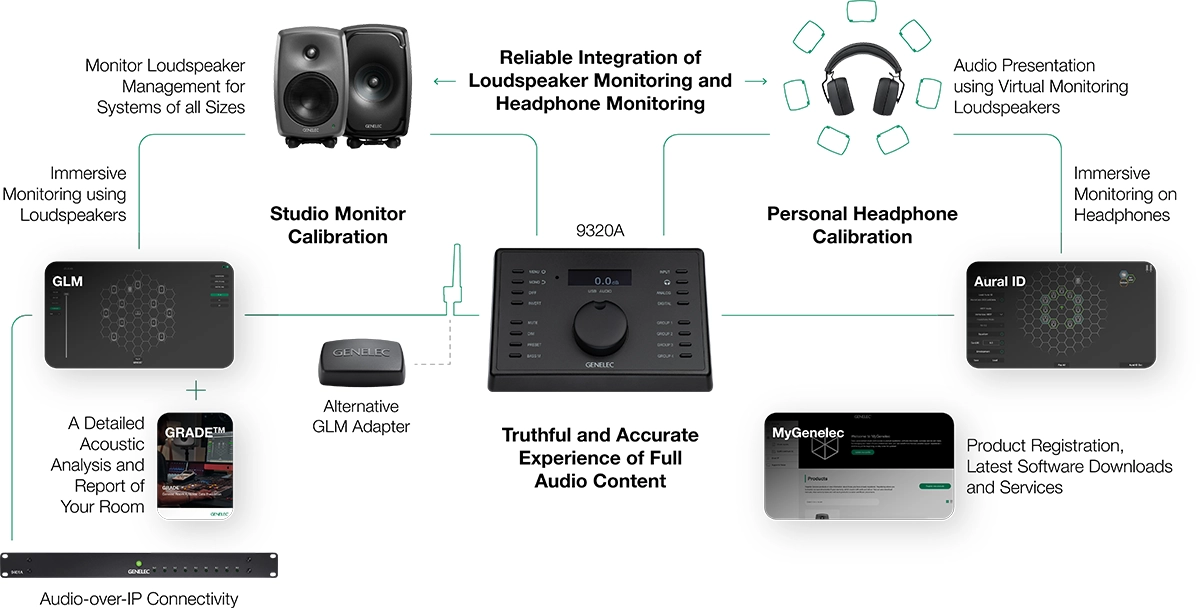
Example setups
9320A ‘Out of the Box’ – Dual Stereo Basic

- No access to Group Presets.
- No binaural.
- With or without Mac or PC.
- Groups 1-4 inactive.
- Audio can be fed from the computer USB port, or using an analogue/digital input. The Input button is used to select the input.
- Audio can be routed to any desired output: Headphone, Analogue or Digital.
- Volume can be controlled with the dial.
- Mono, Diff, Invert, Mute, Dim, Preset buttons work.
- GLM software required for advanced use e.g. to match output levels, control and calibrate SAM system.
9320A with GLM – Dual Stereo GLM
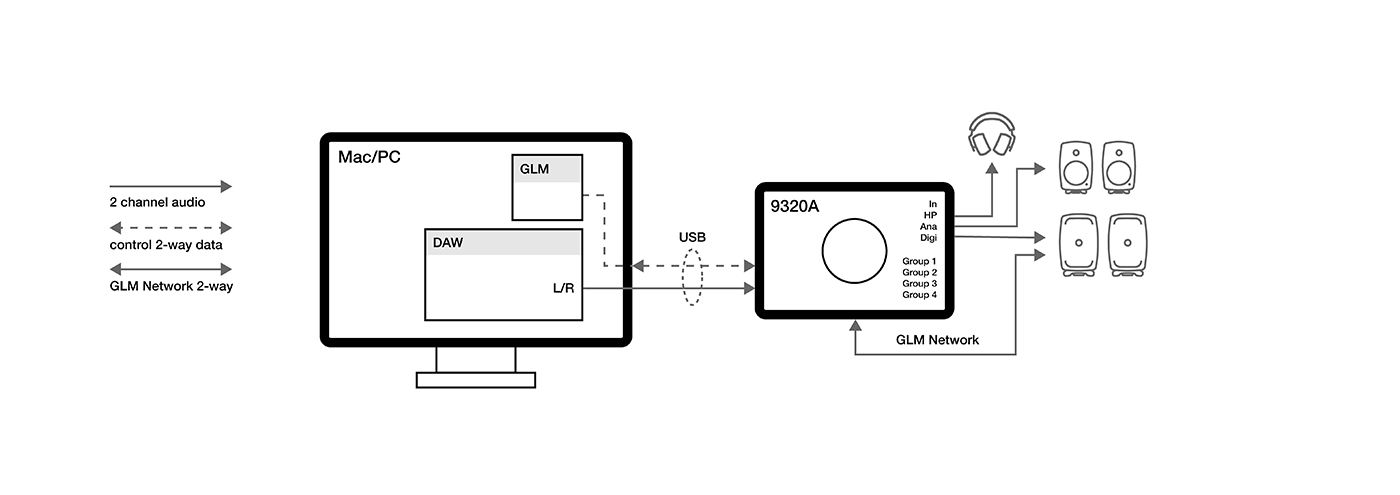
- GLM calibration and presets.
- No binaural.
- Groups 1-4 available.
- Digital out associated with GLM.
- Click 'Digi' to use same preset.
- Click Groups 1-4 to change group.
- Audio can be fed from the computer USB port, or using an analogue/digital input. The GLM group preset is used to select an input and later the Input buttons can be used to change the input.
- Audio can be routed to any desired output: Headphone, Analogue, Digital or none. The GLM group preset is used to define output when a group is activated.
- SAM Monitors can be calibrated with the 9320A and GLM software.
- Volume can be controlled with the dial.
- Mono, Diff, Invert, Mute, Dim, Preset and group buttons work.
9320A with GLM – Dual Stereo / Headphone Immersive
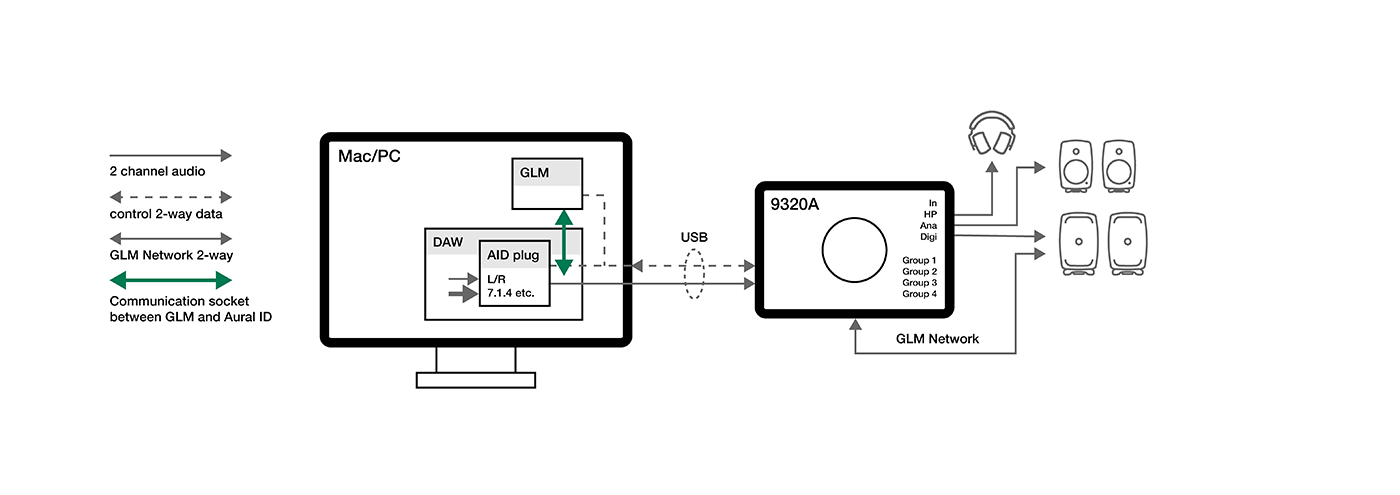
- GLM calibration and presets.
- Aural ID stereo.
- Aural ID immersive.
- Groups 1-4 available.
- Digital out associated with GLM.
- Click 'Digi' to use same preset.
- Click Groups 1-4 to change group.
- USB stereo or binaural, based on 9320A output selection.
- Aural ID plugin goes into L/R bypass, controlled via USB, when binaural audio not used.
- When using GLM and Aural ID processing, GLM will bypass processing if in-room monitoring is activated.
9320A Dual Stereo In-Room Immersive / Headphone Immersive Plug-in
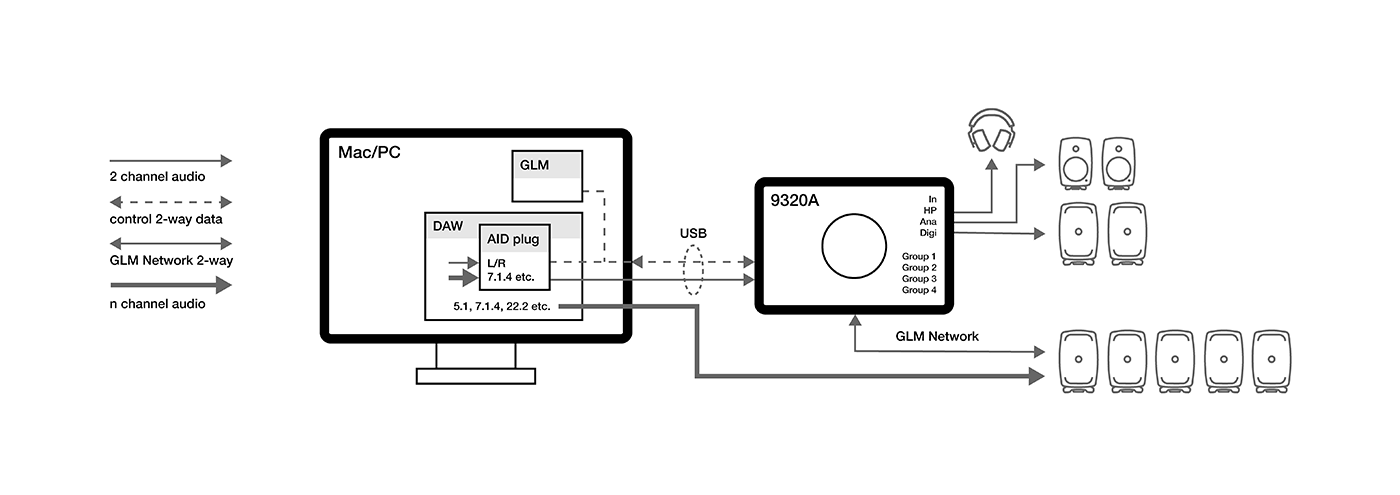
- GLM calibration and presets.
- Aural ID stereo (plug-in).
- Aural ID immersive (plug-in).
- In-room immersive.
- Group 1-4 selects large in-room system.
- Digital out not associated with GLM.
- USB stereo or binaural, based on 9320A output selection.
9320A Stand-Alone Aural ID + Immersive SAM Monitors
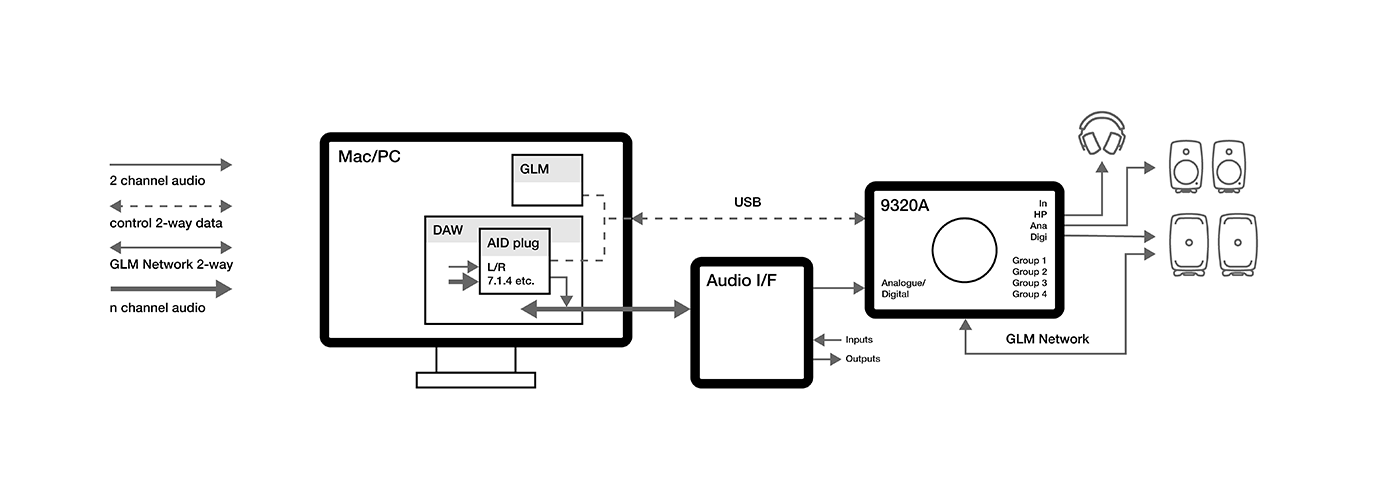
- GLM calibration and presets.
- Aural ID stereo.
- Aural ID immersive.
- Groups 1-4 available.
- Digital out associated with GLM.
- Click 'Digi' to use same preset.
- Click Group 1-4 to change Group.
- Aural ID plug-in/App pass L/R, controlled via USB, when binaural audio is not used.
9320A Dual Stereo In-Room Immersive / Headphone Immersive App
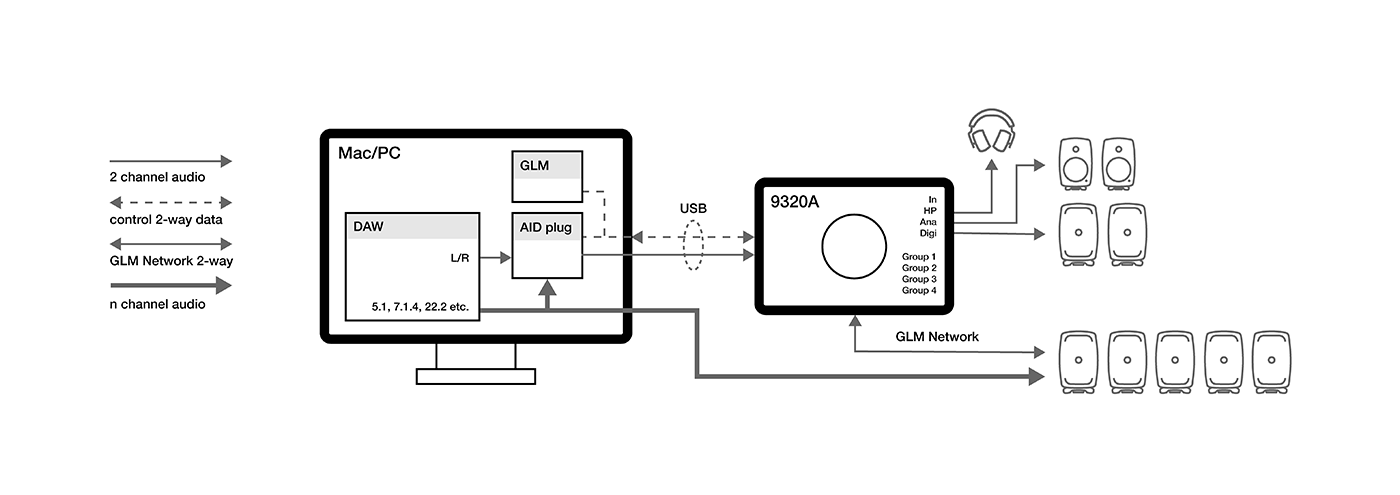
- GLM calibration and presets.
- Aural ID stereo (App).
- Aural ID immersive (App).
- Group 1-4 selects large in-room system.
- Digital out not associated with GLM.
- USB stereo or binaural, based on 9320A output selection.
Technical specifications
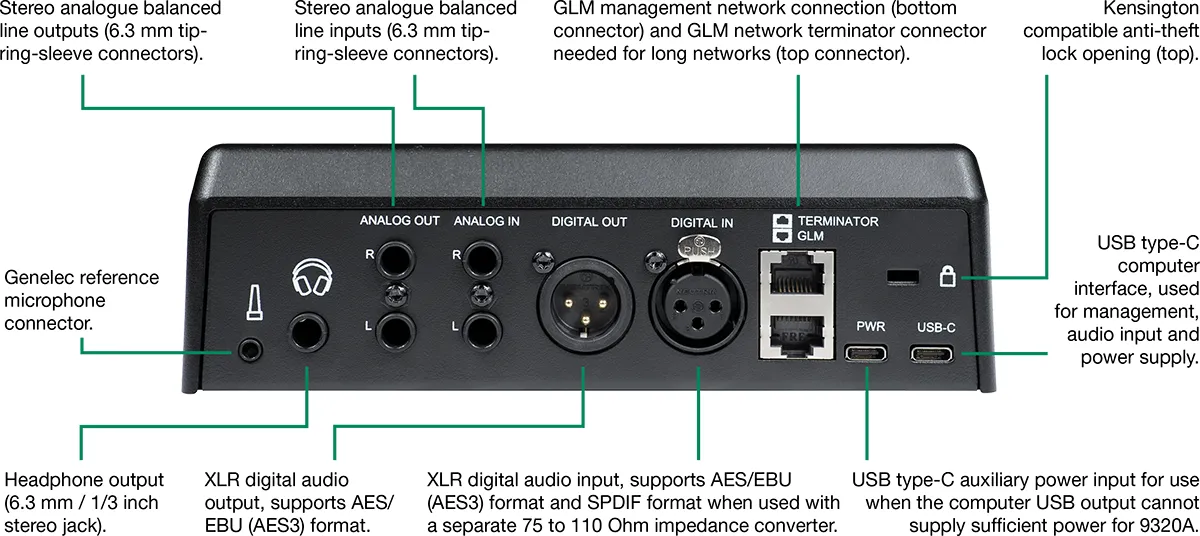

Dimensions
Height: 60 mm (2.4 inches)
Width: 190 mm (7.5 inches)
Length: 139 mm (5.5 inches)
Weight: 0.9 kg (2.0 lb)
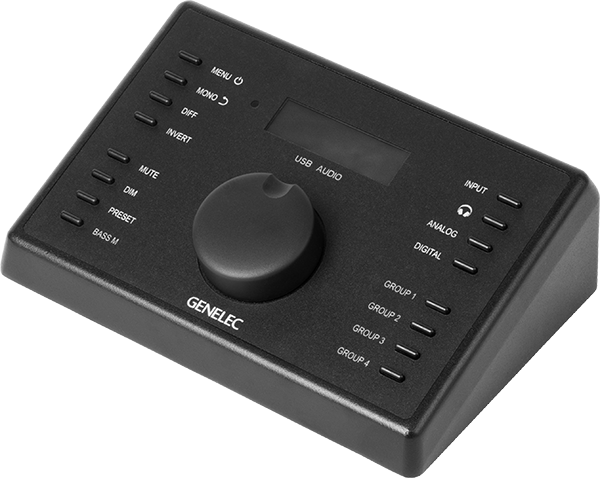
More technical details about the 9320A and our Personal Reference Monitoring solution will follow in the coming days.
Documentation
9320A
SAM™ Reference Controller
Technical Specifications
9320A
SAM™ Reference Controller
Technical Specifications
Connectivity
• Genelec measurement microphone connector.
• Headphones output (6.3 mm stereo jack).
• Stereo analogue balanced line outputs (6.3 mm tip-ring-sleeve connectors).
• Stereo analogue balanced line inputs (6.3 mm tip-ring-sleeve connectors).
• XLR digital audio output, supports AES/EBU (AES3) format.
• XLR digital audio input, supports AES/EBU (AES3) format and SPDIF format when used with a separate 75 to 110 ohm impedance converter.
• GLM management network connection (bottom connector) and GLM network terminator connector needed for long networks (top connector).
• USB type C auxiliary power input for use when the computer USB output cannot supply sufficient power for 9320A.
• Kensington compatible anti-theft lock opening (top).
• USB type C computer interface, used for management, audio input, and power supply for 9320A.
Performance Summary
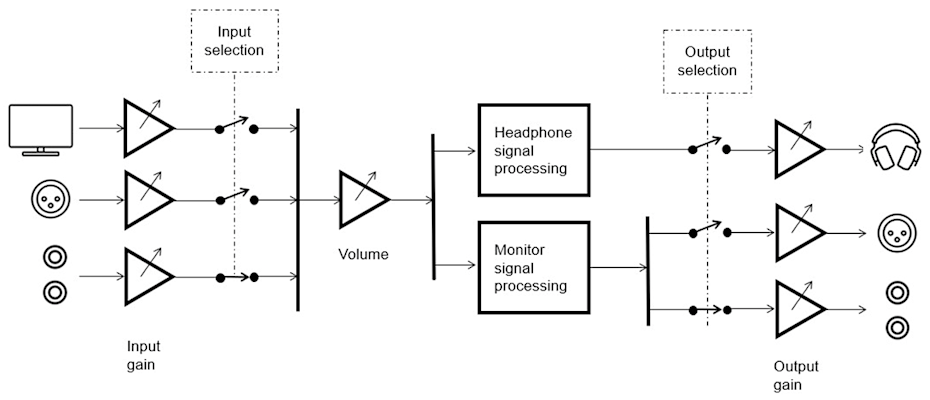
| Headphone output load condition | Headphone impedance (Ω) | Max output power (mW) |
|---|---|---|
| Max output power into two simultaneous output channels, both channels loaded | 16 | 120 |
| 32 | 140 | |
| 150 | 200 | |
| 300 | 115 | |
| 600 | 57 |
Noise dose calculation standards available in 9320A
| Name | US OSHA/MSHA | US NIOSH/ACGIH | US DOD 3dB | US DOD 4dB | Europe EU-OSHA | Explanation |
|---|---|---|---|---|---|---|
| Lcrit | 90 | 85 | 85 | 85 | 85 | Noise dose safety limit (dB) |
| Tcrit | 8 | 8 | 8 | 8 | 8 | Duration of accumulation (h) |
| rate | 5 | 3 | 3 | 4 | 3 | Exchange rate (dB) |
9320A
SAM™ Reference Controller
Technical Specifications
9320A
SAM™ Reference Controller
Technical Specifications
Connectivity
• Genelec measurement microphone connector.
• Headphones output (6.3 mm stereo jack).
• Stereo analogue balanced line outputs (6.3 mm tip-ring-sleeve connectors).
• Stereo analogue balanced line inputs (6.3 mm tip-ring-sleeve connectors).
• XLR digital audio output, supports AES/EBU (AES3) format.
• XLR digital audio input, supports AES/EBU (AES3) format and SPDIF format when used with a separate 75 to 110 ohm impedance converter.
• GLM management network connection (bottom connector) and GLM network terminator connector needed for long networks (top connector).
• USB type C auxiliary power input for use when the computer USB output cannot supply sufficient power for 9320A.
• Kensington compatible anti-theft lock opening (top).
• USB type C computer interface, used for management, audio input, and power supply for 9320A.
The 9320 uses power from one USB connector at a time. When both connectors are connected, the PWR connector is used for power. The computer USB-C power input limits to 2.5 W input power (500mA input current). When the PWR connector is in used, the output power available to the headphone is
slightly higher; the benefit is +0 dB to 2.5 dB more output, depending on the load impedance. The PWR input connector is designed to work with a standard 5 V 1A USB power adapter.
Performance Summary

Mechanical and power
| Parameter | Unit | Value |
|---|---|---|
| Weight | kg (lbs) | 0.890 (2.0) |
| Height | mm (in) | 60 (2 3/8) |
| Width | mm (in) | 190 (7 1/2) |
| Depth | mm (in) | 139 (5 1/2) |
| Supply voltage, USB type C connector | VDC | 5 |
| Operating power consumption, no outputs driven | W | 1.5 |
| Operating power consumption, using computer connector USB-C | W | < 2.5 (typ. 2.25) |
| Operating power consumption, using PWR connector USB-C | W | < 3.5 |
| Sleep mode power consumption | W | 0.125 |
| Operating temperature | C (F) | 15 – 35 (60 – 95) |
| Operating humidity, noncondensing | % | 10 – 80 |
Typical system performance
| Parameter | Unit | AES/EBU input to headphone output | AES/EBU input to line output | Line input to line output | Line input to headphone output | Line input to AES/EBU output |
|---|---|---|---|---|---|---|
| Frequency response, – 3 dB point | kHz | 0 – 46 | 0 – 46 | 0.2 Hz – 46 | 0.2 Hz – 46 | 0.2 Hz – 46 |
| Frequency response flatness, measurement range 10Hz – 40 kHz | dB | ± 0.1 | ± 0.1 | ± 0.1 | ± 0.1 | ± 0.1 |
| Channel gain difference | dB | < 0.1 | < 0.1 | < 0.1 | < 0.1 | < 0.1 |
| Dynamic range (Lo Gain / Hi Gain) | dB | 126 (250-600Ω) | 126 | 121 / 118 | 121 / 118 | 123 / 121 |
| Noise (A weighted), measurement range 20 Hz – 20 kHz, (Vol. -0dBFS) (Lo Gain / Hi Gain) | μV | 3 / 3 | 5.5 / 7.5 | 5.5 / 7.5 | n.a. | n.a. |
| THD+N distortion and noise (Lo Gain), maximum volume setting, input signal -6 to 0 dBFS 1 kHz, measurement range 20 Hz - 20 kHz | % / dB | < 0.0004 / < –108 | < 0.0004 / < –108 | < 0.0005 / < –106 | < 0.0005 / < –106 | < 0.0004 / < –108 |
| THD+N distortion and noise (Hi Gain), maximum volume setting, input signal -6 to 0 dBFS 1 kHz, measurement range 20 Hz - 20 kHz | % / dB | n.a. | n.a. | < 0.0006 / -104 | < 0.0006 / -104 | < 0.0005 / -106 |
| Input to output latency | ms | 3.2 | 3.2 | 2.1 | 2.1 | 2.0 |
| Crosstalk 10kHz -10dBFS Load impedances (100 kΩ, 150 Ω, 32 Ω)* | dB | -120, -87, -74* | -120 | -120 | -120, -87, -74* | -120 |
| * When using small headphone loads, most of the crosstalk is caused by impedance of common ground of TRS connector. | ||||||
Typical output performance
| Parameter | Unit | Headphone output | Analog line output | AES/EBU output |
|---|---|---|---|---|
| Connector | 1/4 in TRS | 1/4 in TRS | XLR male | |
| Electrical interface | Split supply, ground referenced | Balanced | AES 3 | |
| Maximum output voltage | V RMS (dBu) | 6 (17.8) | 6 (17.8) | n.a. |
| V peak | 10.6 | 10.6 | n.a. | |
| V peak-to-peak | 21.3 | 21.3 | n.a. | |
| Output impedance | Ω (ohm) | 1.5 | 80 | 110 |
| Max output current | mA | 120 | n.a. | n.a. |
| Headphone maximum output power (Both left and right channels loaded. Power feed from the computer USB-C connector. In parenthesis when the PWR USB-C input is used for power.) | mW |
|
n.a. | n.a. |
| Frequency response (-3 dB point) | kHz | 0 – 46 | 0 – 46 | 0 – 46 |
| Frequency response flatness (range 10Hz – 40 kHz) | dB | ± 0.1 | ± 0.1 | ± 0.01 |
| Channel gain difference | dB | < 0.05 | < 0.05 | < 0.01 |
| Dynamic range | dB | 126 (Load 250-600Ω) | 126 | 138 |
| Noise A weighted (20-20 kHz) | uV | 3 | 3 | n.a. |
| Distortion and noise (250-600Ω) Input -6 to 0 dBFS 1 kHz, 20 Hz to 20 kHz measurement range. | % | < 0.0004 | < 0.0004 | n.a. |
| dB | < –108 | < –108 | n.a. |
Typical input performance
| Parameter | Unit | Analogue line input | USB input | AES/EBU input |
|---|---|---|---|---|
| Connector | mm (in) | 6.3 (1/4) TRS | USB-C | XLR female |
| Interface type, electrical | Balanced | USB 2.0 High Speed | AES 3 | |
| Maximum input voltage (Lo Gain) | dBu | 24 | n.a. | n.a. |
| Maximum input voltage (Hi Gain) | dBu | 12 | n.a. | n.a. |
| Input impedance, differential | Ω (ohm) | 6600 | n.a. | 110 |
| Frequency response, -3 dB | kHz | 0.2 Hz - 46 | 0 – 46 | 0 – 46 |
| Samplerates | kHz | n.a. | 44.1, 48, 88.2, 96, 176.4, 192 | 32 – 192 |
| Sample word length | bit | n.a. | 24 | 16 – 24 |
| Frequency response flatness 20 Hz - 40 kHz | dB | ± 0.05 | ± 0.01 | ± 0.01 |
| Channel gain difference | dB | < 0.05 | < 0.01 | < 0.01 |
| Dynamic range (A weighted) 20-20kHz (Lo Gain / Hi Gain) | dB | 123 / 121 | 138 (24 bit) | 138 (24 bit) |
| Equivalent input noise (A weighted) 20-20kHz (Lo Gain / Hi Gain) | μV | 9 / 3 | n.a. | n.a. |
| THD+N distortion and noise (Hi Gain), input signal -6 to 0 dBFS 1 kHz, measurement range 20 Hz - 20 kHz | % / dB | 0.0005 / –106 | n.a. | n.a. |
| Distortion and noise (Low Gain), input signal -6 to 0 dBFS 1 kHz, measurement range 20 Hz - 20 kHz | % / dB | 0.0004 / –108 | n.a. | n.a. |

Typical total harmonic distortion + noise performance of the headphone output at various headphone imedances.


